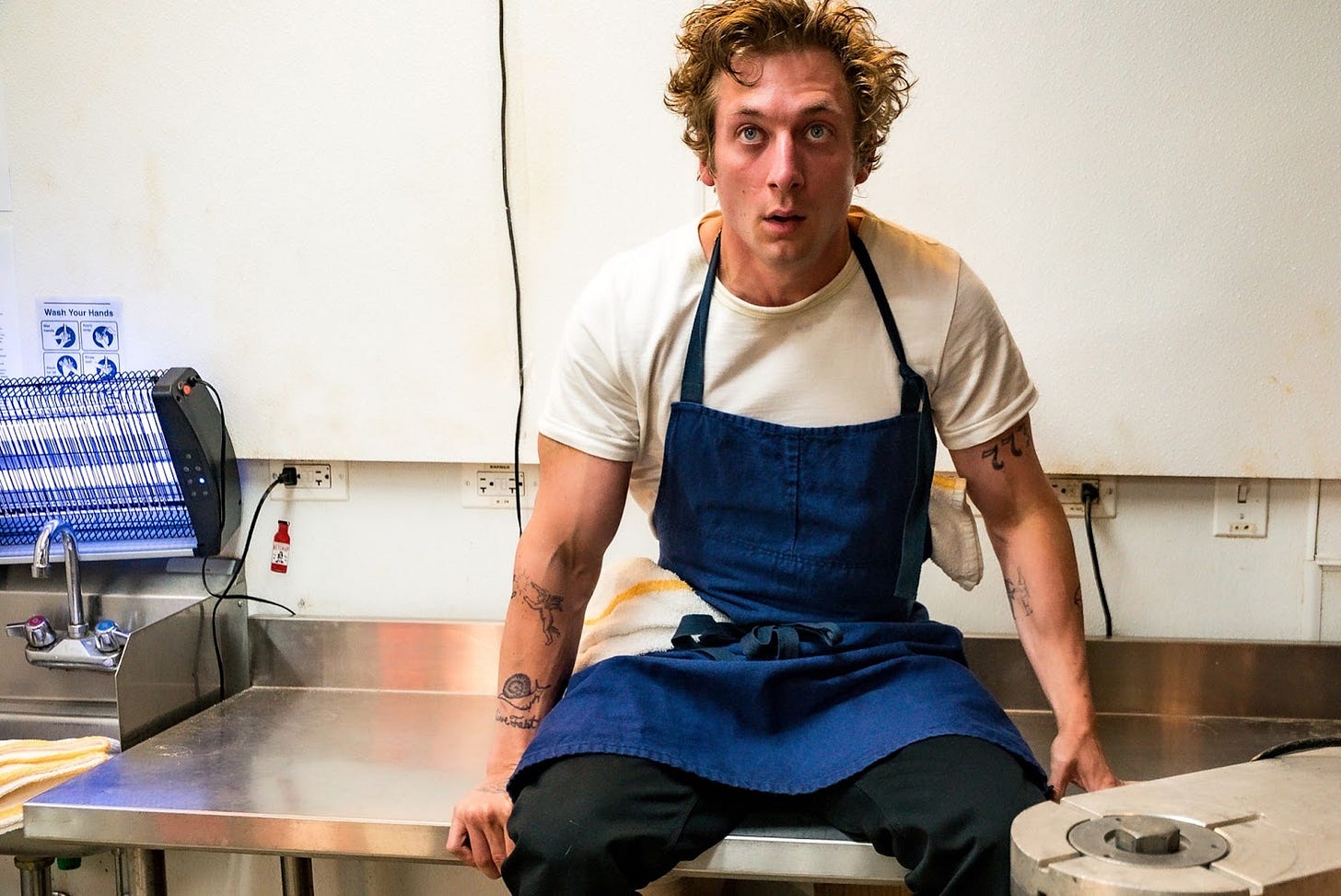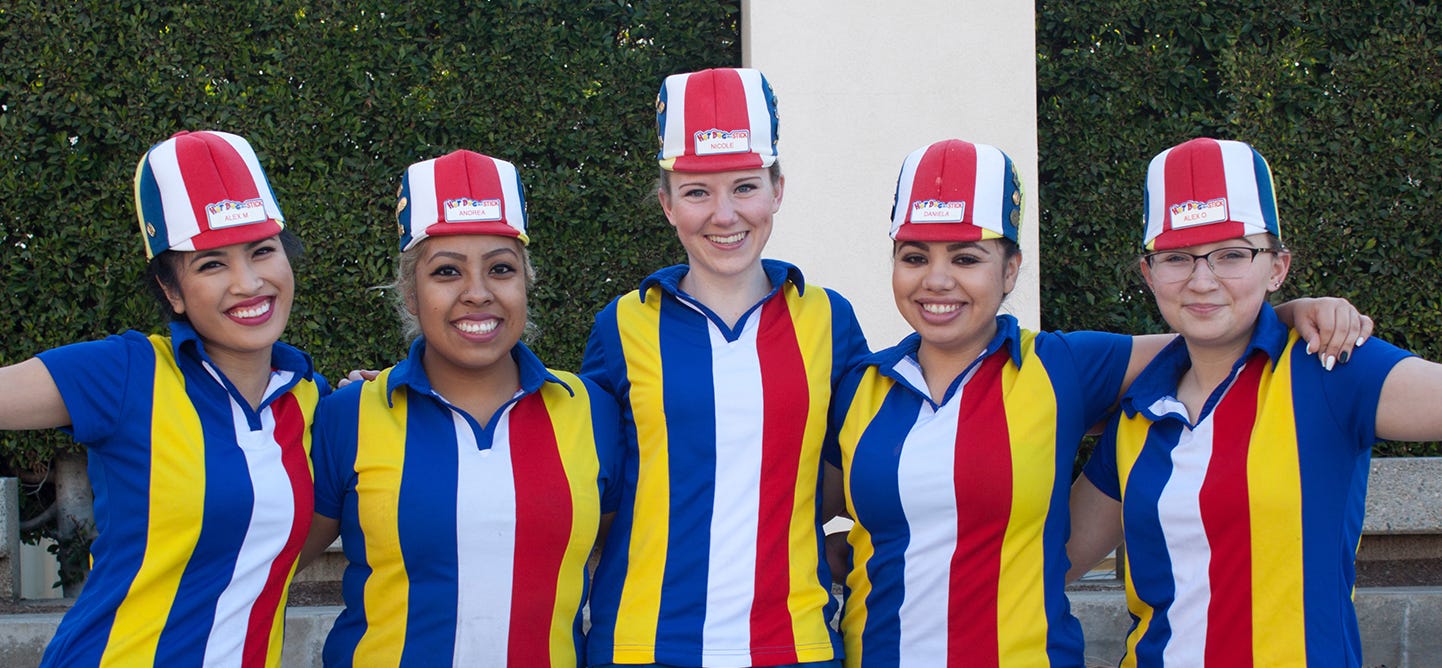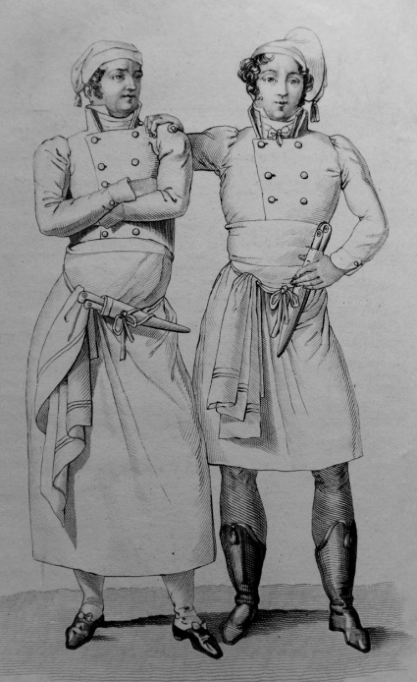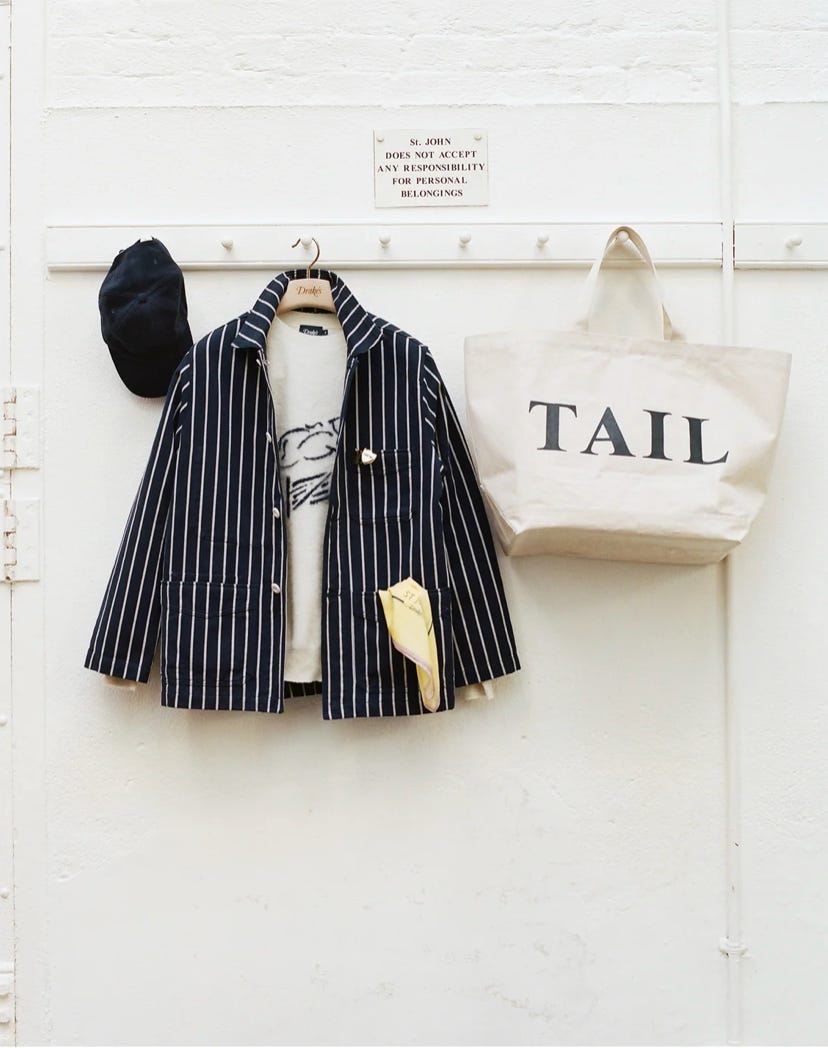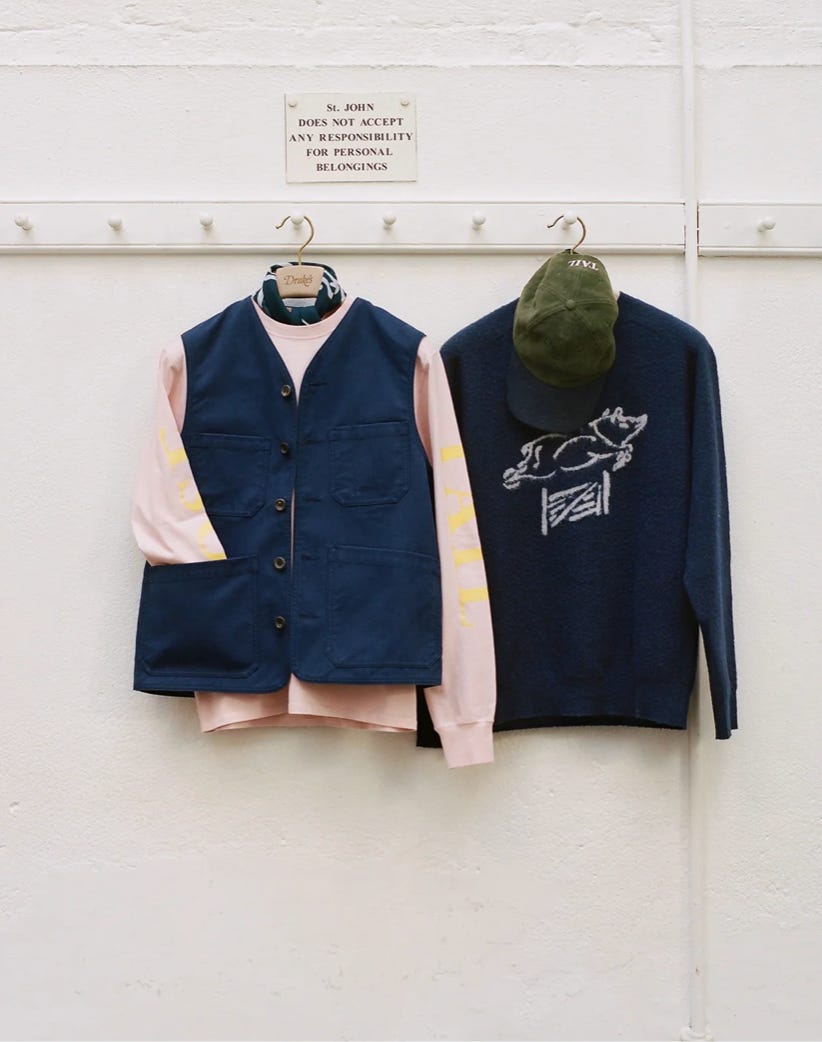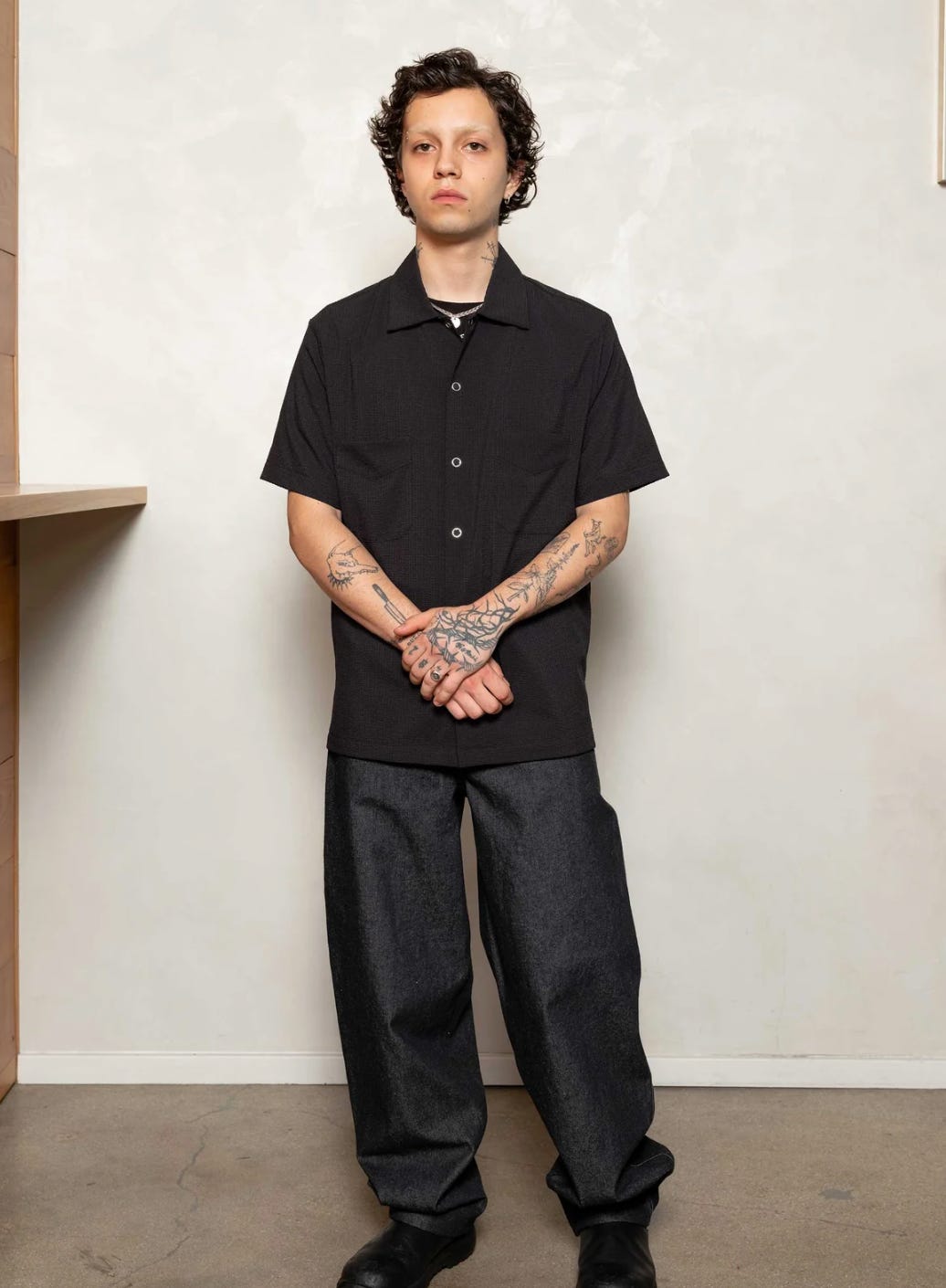"Chefcore"
Serving since 1817.
Welcome to Neverrong. Read along here for any and all juicy tidbits and links you may have missed along the way. Listen to the FULL EPISODE HERE.
After a rather too-long detour into bugs, bug bombs, and whether or not a cat is having a good time, we get into the latest dumb -core that has been foisted upon us by the “media.”
Chefcore: The Episode
Fashion loves blue collar cosplay and there’s a new archetype in town: the culinary worker! Obviously, this has much to do with “The Bear,” a show at that rare intersection of great writing, acting, and (miraculously) great wardrobe.
David, much before the advent of this podcast, predicted that Mall Worker uniforms would be the next -core (which hasn’t quite happened), but he also predicted what he called Essential Workwear, which chefcore certainly is! (Line Cooks had the highest mortality rates of any essential workers during the pandemic.)
So basically David was way ahead of the curve. But before we can talk about how fashion has co-opted this in modern day, we must go back to the chef uniforms of yore.
History
The first record of the traditional chef’s uniform is about 200 years old, before that, cooks generally only wore aprons in paintings, etc. In 1822, French chef Marie-Antoine Careme sketched out the first tall white hat, double breasted and aproned chef’s uniform for his sprawling culinary empire.
He was, allegedly, the most important person in culinary history, and none of us had heard of him before. An early, “is it cake” guy - Careme was a huge celebrity in his day. A Cake Boss meets Salt Bae that profoundly influenced the history of the culinary arts with his book, “Le Maitre d’Hotel Francais.”
His book dictated where utensils go at a place setting and more importantly, the sexy little outifts that chefs should wear. Careme adopted the chef hats from flat, beret-like caps, but devised a system in which the most senior person in the kitchen had to have the tallest hat - his own was about a foot tall. The double-breasted jackets could be reversed in case of stains, but were white to show off how efficient and clean you were (hopefully).
Auguste Escoffier began mass-producing this look in the 1870s when he created the “brigade” system that is used in many fancy kitchens (and maybe normal ones, I don’t know).
Eventually black and white check pants were adopted, as were clogs! The uniform hasn’t much changed from 1822 to now, although the recent changes are largely what we’re discussing.
The Trend
Now it’s not so much that chefs need uniforms as much as restaurants need signature looks and merch. There are many more fashion collabs with restaurants - which the staff wears - and which die-hard fans can buy to cook in at home.
Michelin starred restaurant St John recently did a collaborative collection with UK brand Drake’s. It’s mostly workwear lookin’ stuff.
LA Michelin restaurant, Kato, did something similar with the brand Goodfight. They universally take cues from classic workwear. Chefs certainly do wear workwear, but you can’t even tell the tall hat hierarchy in any of these collabs! What the hell is this?! Rosa Rugosa isn’t explicitly chef-core, but it is a workwear brand created by a chef (Matty Matheson). Albert bought a pair of pants from them, but they ended up being much too small and now he’s too demoralized to try and replace them.
Red Kap chef pants.
There are brands making chef pants that are totally removed from the restaurant collab cottage industry. Chef pants are in most cases, workwear looking pants with elastic waistbands. Service Works London and Cookman USA are notable brands. (But you can get even more authentic looking pants from Red Kap.)
But do any of these collabs truly feel like chef-wear? The authentic Red Kap feels right – actual Dickies seem right. But does any of this other stuff do that? The most popular piece of clothing from The Bear was just a plain white tee that on its own doesn’t quite exude the brooding sweaty stress that made the show so popular.
The other aspect (or off-shoot) of chefcore is “restaurant groupie merch.” It’s practically the new band tee. We’ve certainly all bought restaurant merch - but usually for silly little spots (delis, liquor stores, etc.) we’ve encountered along the way – not for current hyped spots.
What do these screen-printed tees even convey? David likens their wearers to Nicholas Hoult’s character in The Menu who would literally die to eat at a restaurant, but doesn’t know the first thing about cooking. There is a caché to the rare and typically employee-only hats and accessories from our favorite spots, but the available-to-the-masses merch feels decidedly less special!
David says that he thinks that chefs are trying to recontextualize their work as a purely workwear job, not as a servant to the upper classes, which is what the old tall hat uniforms basically connoted.
How Would We Rate It:
David: 3.5-7 “I agree that I would say when it's worn by chefs, it would be like a 7 or an 8 maybe higher But when it is worn casually and commodified in this way, we're in 3, 3.5 territories.”
Albert: 3-7 “I think chefcore in the sense of like the actual thing that chefs do and the sort of the vibe they bring to the table, I think is really interesting and, and, and the choices they make, you know, I think, I think we're always interested in how people dressing for function and like, and sort of customizing, you know, their uniform to, to adapt to a very specific and challenging career. So I think that's cool and I would give that like a 7, just like the actual way that chefs dress and the way they adapt to their situations and the way they incorporate different things, often, main line workwear brands into their style. But I think the commodified way that we're being sold Chefcore… yeah, a 3.”
“And those saucy little chefs you showed us with the floppy hats. That's a 10 out of 10.”
Reed: Reed weaseled out of rating. “ I’m a clogsman. I like that clogs have been normalized and easy pants are fine. I think that it’s cool to recontextualize all this.”


